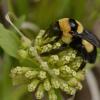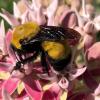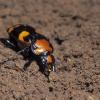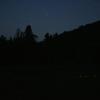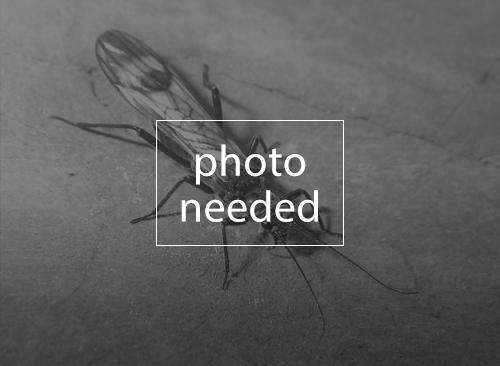
Dukes’ skipper is found in scattered locations across the eastern United States and southeastern Canada. Populations are fragmented throughout its distribution and it is uncommon everywhere in its range. It can be found in a variety of moist habitats with long grass, such as marshes or ditches, but the primary habitat is patches of sedge—its main larval host plant—in forested swamps. Dukes’ skipper deserves conservation efforts wherever it is found. Its forested wetland habitat should be protected from drainage, logging, and spraying.
Taxonomic Status
(Lepidoptera: Hesperiidae: Hesperiinae)
Euphyes dukesi (Lindsey), 1923. There are two subspecies, E. d. dukesi (Lindsey), 1923, found in the entire range except peninsular Florida, and E. d. calhouni Shuey, 1996, restricted to peninsular Florida.
Dukes’ skipper is in the family Hesperiidae (skippers). It is a medium- sized butterfly with a wingspan of 38 to 45 mm (1½ to 1¾ inches). The uppersides of the wings is sooty black (fading to dark brown on dead specimens. On the males the wings are unmarked apart from a black stigma on the forewing. On females, the forewing has a few pale spots. On the underside, the hindwing is paler, more brown in color with a yellow streak through the cell.
Eggs are laid singly on under the leaves of hostplants. Caterpillars overwinter as fourth instars.
The number of broods varies with latitude. In the north (Ontario), there is a single flight period between July and mid-August. In the mid-south, there are two between June and September. In the south, the flight period is longer, allowing three broods between May and November. Adults visit open wetlands to drink nectar from flowers such as pickerelweed (Pontederia sp.), sneezeweed (Helenium sp.), hibiscus (Hibiscus sp.), and blue mistflower (Conoclinium sp.).
Dukes’ skipper is found in scattered locations across the eastern United States and southeastern Canada. There are three regional clusters: 1) along the Atlantic Coast from southeast Virginia to northern peninsular Florida; 2) the lower Mississippi Valley from central Missouri and southern Illinois south to the Gulf Coast; and 3) extreme southwestern Ontario, southeastern Michigan, northeastern Indiana, and northern Ohio.
It is not known if the current distribution reflects the historic range or whether the butterfly has been extirpated from areas between the existing regional clusters by massive habitat loss due to land drainage and other development.
Dukes’ skipper can be found in a variety of moist habitats with long grass, such as marshes or ditches, but the primary habitat is sedge patches in forested swamps. Larval hostplants are sedges, including hairy sedge (Carex lacustris) and shoreline sedge (Carex hyalinolepis). Hostplants for the Florida subspecies, E. d. calhouni, are narrowfruit horned beaksedge (Rhynchospora inundata) and millet beaksedge (R. miliacea).
Xerces Red List Status: Vulnerable
Other Rankings:
Canada – Species at Risk Act: None
Canada – provincial status: None
Mexico: N/A
USA – Endangered Species Act: None
USA – state status: MI: Threatened
NatureServe: G3
IUCN Red List: N/A
Populations of Dukes’ skipper are fragmented throughout its distribution and it is uncommon everywhere in its range. Some populations isolated by land drainage maybe too small to persist. Michigan lists Dukes’ skipper as Threatened.
Land drainage leading to drying of marshes/ditches is undoubtedly a significant threat to the remaining wetland habitats. In some regions, spraying for pest control may be an issue, for example, for mosquito control in Florida. Although Dukes’ Skipper prefers forested habitat, in general gypsy moth is not a pest in the areas it occupies, although logging may be a threat if it opens up shady sites.
Dukes’ skipper deserves conservation efforts wherever it is found. Its forested wetland habitat should be protected from drainage, logging, and spraying.
Studies of dispersal and population dynamics would be valuable to assess the viability of small and isolated populations and identify significant metapopulations.
Opler, P. A., and G. O. Krizek. 1984. Butterflies East of the Great Plains. Johns Hopkins University Press, Baltimore, MD.
Opler, P. A., and V. Malikul. 1992. A Field Guide to Eastern Butterflies. Peterson Field Guide #4. Houghton-Mifflin Co., Boston, MA
Scott, J. A. 1986. The Butterflies of North America. Stanford University Press, Stanford, CA.
Stanford, R. E., and P. A. Opler. 1993. Atlas of Western USA Butterflies Including Adjacent Parts of Canada and Mexico. Denver and Fort Collins, CO.
Profile prepared by Mace Vaughan and Matthew Shepherd, The Xerces Society.
Citation
Vaughan, D. M., and M. D. Shepherd. 2005. Species Profile: Euphyes dukesi. In Shepherd, M. D., D. M. Vaughan, and S. H. Black (Eds). Red List of Pollinator Insects of North America. CD-ROM Version 1 (May 2005). Portland, OR: The Xerces Society for Invertebrate Conservation.

